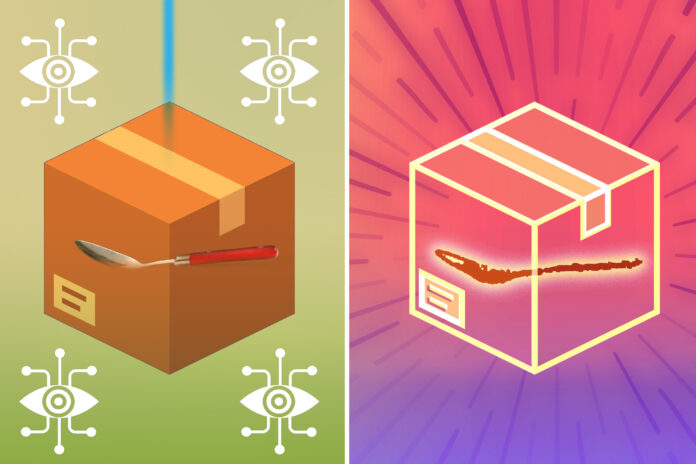Introduction to mmWave Technology
A new imaging technique developed by MIT researchers could enable quality-control robots in a warehouse to peer through a cardboard shipping box and see that the handle of a mug buried under packing peanuts is broken. This approach leverages millimeter wave (mmWave) signals, the same type of signals used in Wi-Fi, to create accurate 3D reconstructions of objects that are blocked from view.
How mmWave Technology Works
The waves can travel through common obstacles like plastic containers or interior walls, and reflect off hidden objects. The system, called mmNorm, collects those reflections and feeds them into an algorithm that estimates the shape of the object’s surface. This new approach achieved 96 percent reconstruction accuracy on a range of everyday objects with complex, curvy shapes, like silverware and a power drill. State-of-the-art baseline methods achieved only 78 percent accuracy.
Applications of mmNorm
In addition, mmNorm does not require additional bandwidth to achieve such high accuracy. This efficiency could allow the method to be utilized in a wide range of settings, from factories to assisted living facilities. For instance, mmNorm could enable robots working in a factory or home to distinguish between tools hidden in a drawer and identify their handles, so they could more efficiently grasp and manipulate the objects without causing damage.
The Science Behind mmNorm
Traditional radar techniques send mmWave signals and receive reflections from the environment to detect hidden or distant objects, a technique called back projection. This method works well for large objects, like an airplane obscured by clouds, but the image resolution is too coarse for small items like kitchen gadgets that a robot might need to identify. In studying this problem, the MIT researchers realized that existing back projection techniques ignore an important property known as specularity.
Understanding Specularity
When a radar system transmits mmWaves, almost every surface the waves strike acts like a mirror, generating specular reflections. If a surface is pointed toward the antenna, the signal will reflect off the object to the antenna, but if the surface is pointed in a different direction, the reflection will travel away from the radar and won’t be received. The researchers developed mmNorm to estimate what is called a surface normal, which is the direction of a surface at a particular point in space, and use these estimations to reconstruct the curvature of the surface at that point.
Testing mmNorm
The team tested mmNorm’s ability to reconstruct more than 60 objects with complex shapes, like the handle and curve of a mug. It generated reconstructions with about 40 percent less error than state-of-the-art approaches, while also estimating the position of an object more accurately. Their new technique can also distinguish between multiple objects, like a fork, knife, and spoon hidden in the same box.
Future Applications and Improvements
The researchers want to explore these and other potential applications in future work. They also want to improve the resolution of their technique, boost its performance for less reflective objects, and enable the mmWaves to effectively image through thicker occlusions. This work could have a broad impact on various fields, including robotics, security, and defense.
Conclusion
In conclusion, the new imaging technique developed by MIT researchers has the potential to revolutionize the way we interact with hidden objects. With its high accuracy and efficiency, mmNorm could enable robots and other devices to see through obstacles and manipulate objects with precision. As the researchers continue to improve and expand this technology, we can expect to see new and innovative applications in various fields.

